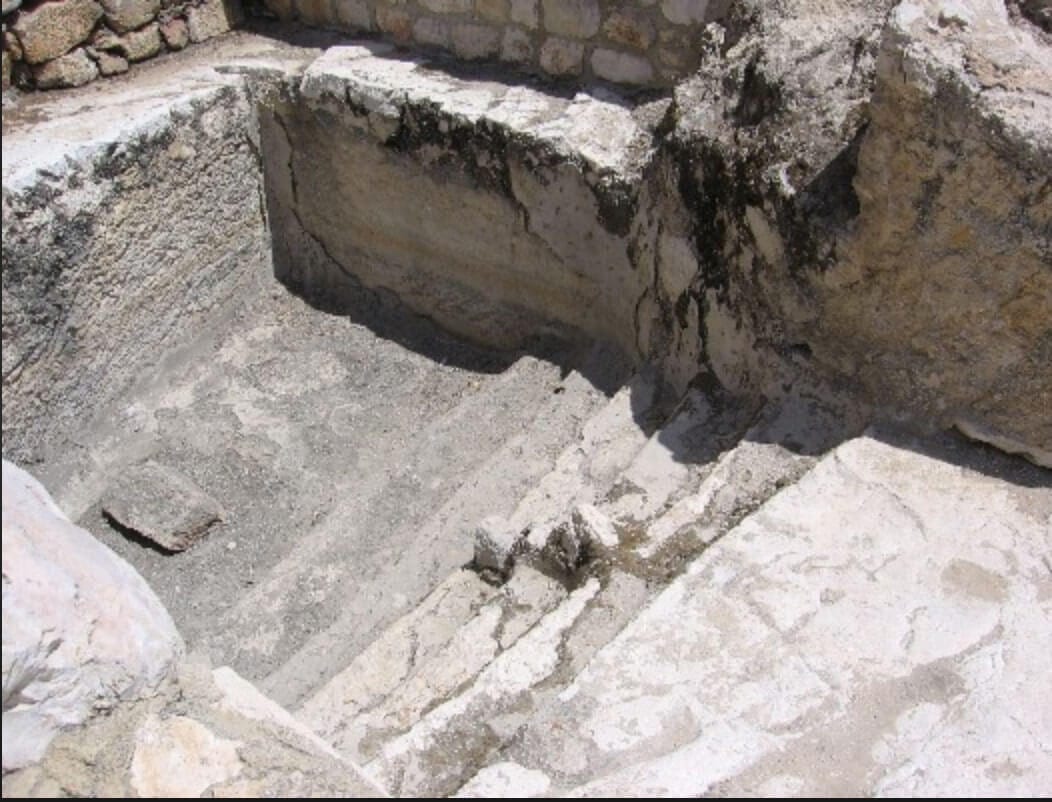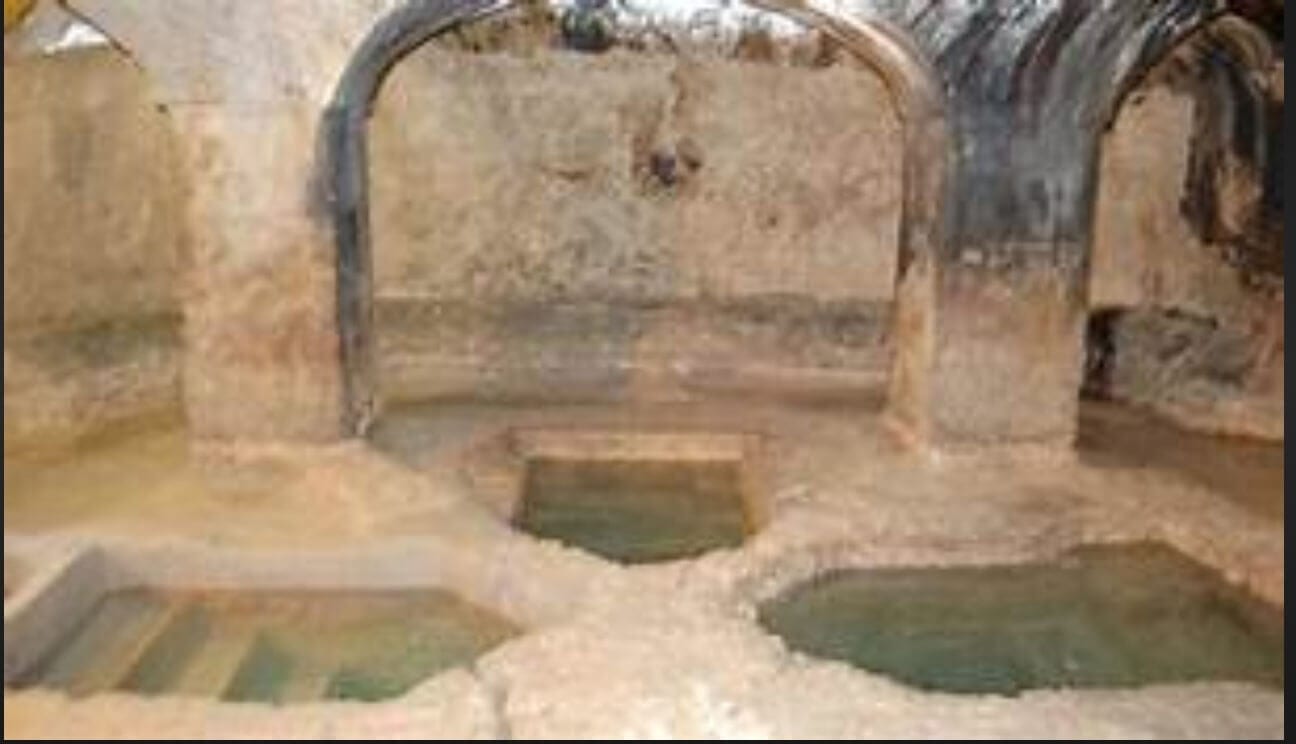Robert Stern
Piotr Kozlowski
David Forstein
New York City, New York, United States
The mikveh may be seen as part of the sociobiological process assuring the gradual cross exposure of community members to the biomes of other members. It also provides controlled exposure to the biomes of visiting guests, possibly bringing new microorganisms into the community. Previous articles in this series have highlighted such public health measures derived from Jewish tradition as: the isolation of people with infectious disorders (Figure 1), the recognition of tuberculous cows as a source of human disease at the time of ritual slaughter (Figure 2), the importance of hand washing in limiting the transmission of infectious diseases (Figure 3), and identification of hemophilia A as a genetic disorder governing the laws about circumcision (Figure 4). We now focus on ritual ablution or full body immersion (tevilah) in the ritual bath termed the mikveh.
History and importance in Judaism

The mikveh is an ancient tradition, with archaeological evidence of continuous use for millennia. Its architectural design has remained remarkably constant. Primarily a ritual and religious experience, it is usually run by women and designed primarily for them. It is part of the ancient Jewish tradition of ritual purity (taharah) and its opposite, ritual impurity (tumah). These concepts originated in biblical times1 and enabled persons to enter the Temple in Jerusalem. In Jewish observance the construction of a mikveh in a community takes priority over building the house of worship (Beit Knesset), and if required even the sale of its Torah scrolls.
Following the destruction of the Temple and as Judaism underwent the changes necessary for a portable religion, the only means of regaining ritual purity was by immersion in local mikvehs. Ritual impurities arise from childbirth, semen emission, contact with a corpse, or menstruation. Men traditionally immerse themselves in the mikveh before Yom Kipur (the Day of Atonement), less often before the three pilgrimage festivals of Succot (the Feast of Tabernacles), Pesach (Passover), and Shevuot (the Feast of Weeks). Some use the mikveh before the Sabbath, and the ultra Orthodox daily before morning prayers. Other practices include ritual immersion before working on hand-written Torah scrolls, and by some Orthodox Jews for purification of any newly acquired utensil used to prepare, serve, and eat food. The mikveh is the mechanism required for conversion to Judaism.
Only married women who have periods use the mikveh. In modern times Orthodox Jewish men are forbidden to have sexual intercourse with wives who are menstruating or have recently given birth until they have stopped bleeding, waited the proscribed time of seven days, and have undergone ritual immersion. This also corresponds to the time when ovulation begins for the next cycle and pregnancy is most likely to occur.

Figure 2. Mikveh in Syracuse, Sicily (6th century), the oldest in Europe.
The rules on using the mikveh are most commonly observed in Orthodox Judaism. In more liberal branches of Judaism such as in the Conservative branch, many leniencies and exceptions are made. But even in the Reform movement, a return is taking place to more traditional rites, corresponding to the increased interest, particularly among women, of more spiritual and religious aspects of life.
Other Abrahamic religions also practice aspects of immersion, such as baptism among Christians, ablutions before prayers by Muslims, and immersion in the holy Ganges River by followers of the Hindu faith. Judaism, however, appears unique in requiring a partial sharing of the immersion waters.
The mikveh is built out of bricks or stones as a permanent structure. Its water must be derived from natural sources, such as a stream or collected rainwater. When the water in the mikveh is replaced, a portion of it must be retained, assuring exposure to existing microorganisms, and to some extent controlled exposure to new microorganisms brought into the community by visitors.
In the community the mikveh is a more permanent structure than even the house of worship. Any location with a quorum of ten Jewish men (after the age of bar-mitzvah), referred to as a minyan, can constitute a gathering place for prayer. The mikveh is thus a greater mainstay of a community, conferring symbolic sanctity to the family and family relations.
The skin as an immunological organ

The skin is a complex and dynamic ecosystem, constantly renewing itself and evolving. It is inhabited by bacteria, fungi, ticks, mites, and viruses, referred to as the skin microbiota. Most of these organisms are non-pathogenic and their distribution in different skin areas varies but all are fundamental to skin physiology.
Skin is the largest organ of the body constituting, without subcutaneous tissues, approximately seven pounds of the weight of a 165-pound person. It covers the entire body and provides a physical barrier to assaults by foreign, toxic, and invasive organisms. The skin is also an active immunological organ that has tremendously complex interactions with internal organs.3 Of the three dominant routes of microbial contact – cutaneous, alimentary tract, and respiratory – the cutaneous route appears to be safest. Infection with microorganisms via the alimentary and respiratory tract are longer lasting and are more likely to cause diffuse generalized blood infections.
Regulations regarding mikveh immersion require removing all impediments to complete exposure such as cosmetics, nail polish, matted hair, and other interfering implements. This facilitates exposure of all external body parts to the waters of the mikveh.
Communal immunity

Figure 4. Mikveh in current use, in Austin, TX.
The concept of communal or herd immunity has recently taken on increasing importance, particularly in conversations about vaccination. Herd immunity, also called the herd effect or community immunity, is a form of indirect protection from infectious diseases that occur when a large part of a population becomes immune to an infection, thereby providing some protection for non-immune individuals.
In a population in which many people are immune, chains of infection are likely to be disrupted, which stops or slows the spread of disease. The more people are immune, the less likely it becomes that those without immunity will come into contact with an infectious person. The term herd immunity, first used in 1923,2 was recognized as a naturally occurring phenomenon when it was observed that fewer infections occurred as more children had become immune to measles. Use of the mikveh in a community may facilitate a similar type of protection. This influence on the health of the community could only have been known after prolonged and careful observations, even before the infectious nature of some diseases was understood.
References
- Leviticus 12: 1-8 and Leviticus 15: 19-30.
- Fine P, Eames K, Heymann D L. Herd immunity: “A rough guide”. Clinical Infectious Diseases. 52: 911–6 (2011).
- Chen YE, Michael A. Fishbach MA, Yasmine Belkaid Y. Skin microbiota – host interaction, Nature 553: 427-436 (2018).
- The authors are all on the faculty of the Touro-Harlem College of Osteopathic Medicine in New York City, NY, 10027. USA
ROBERT STERN, MD, was a professor of pathology in the Department of Basic Biological Sciences at the Touro-Harlem College of Osteopathic Medicine in New York City, New York.
PIOTR KOZLOWSKI, MD, is the dean of research and a professor of pathology at the Touro-Harlem College of Osteopathic Medicine in New York City, New York.
DAVID FORSTEIN, DO, is an executive dean and professor at the Touro-Harlem College of Osteopathic Medicine in New York City, New York.
